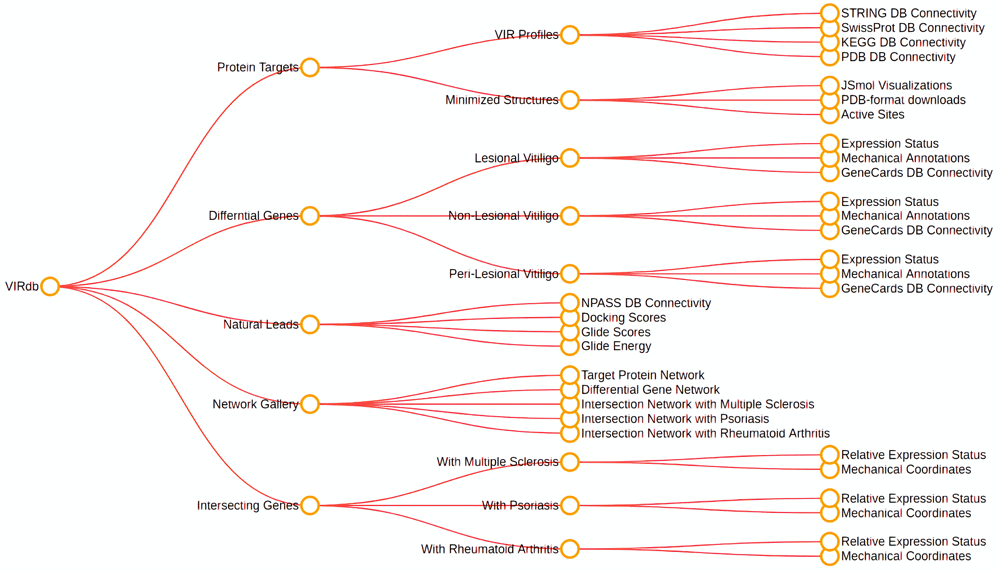Introduction to Vitiligo Information Resource (VIRdb 2.0)
Unraveling Vitiligo Complexity: An Introduction to VIRdb 2.0
Vitiligo is a complex skin disorder characterized by the loss of pigment-producing cells. Understanding the mechanisms behind this condition requires synthesizing information from various sources, including gene expression changes, relevant protein targets, potential therapeutic compounds, and the intricate networks that connect them. Researchers often find this data scattered, making it challenging to gain a holistic view and expedite discoveries. Additionally, understanding the interactions between vitiligo and other health conditions (comorbidities) adds another layer of complexity.
To address these challenges, our research team developed VIRdb 2.0, envisioned as the “ultimate vitiligo research database.” This platform aims to be an interactive and comprehensive resource integrating diverse datasets relevant to vitiligo pathogenesis.

What VIRdb 2.0 Offered
Integrated Data: Brought together information on differentially expressed genes (DEGs) in vitiligo, curated protein targets, and natural compounds with potential relevance.
Network Analysis: Featured gene-gene and protein-protein network visualizations derived from our analyses, helping researchers explore biological interactions.
Comorbidity Focus: Specifically designed to support the interactive analysis of conditions often associated with vitiligo, using co-expression network approaches.
Interactive Exploration: Allowed users to dynamically explore the data tables and network graphs.

Why VIRdb 2.0 Was Created
The goal of VIRdb 2.0 was to empower researchers by:
Providing a centralized hub for diverse vitiligo-related data.
Facilitating the identification of potential therapeutic targets and pathways.
Enabling the exploration of complex biological networks and comorbidities associated with vitiligo.
Ultimately, accelerating research towards better understanding and treatment of the condition.
Accessing VIRdb 2.0 Resources
Database Link: https://vitiligoinfores.com/
Read our publication: Srivastava, Talwar, Yadav, Choudhary, Mohanty, Bharti, Narad, & Sengupta (2021). F1000Research. https://doi.org/10.12688/f1000research.25713.2
Although the live database may currently be unavailable, the project represents a valuable effort in integrating complex data for vitiligo research, and the publication details the findings and approach.
A Collaborative Development & My Role
Building VIRdb 2.0 was a significant team effort, requiring expertise in vitiligo biology, bioinformatics analysis, data curation, and web development. While the team worked on data generation, analysis, and curation, my specific contribution focused on the visualization aspects, particularly implementing the interactive network graphs. I utilized the D3.js library in JavaScript to create dynamic and explorable visualizations of the complex gene and protein interaction networks identified by our team’s analysis. This allowed users to visually navigate and understand the relationships within the data.
This post was drafted with assistance from various AI models to help share my project work more effectively. Please feel free to reach out if you spot any typos or have corrections!